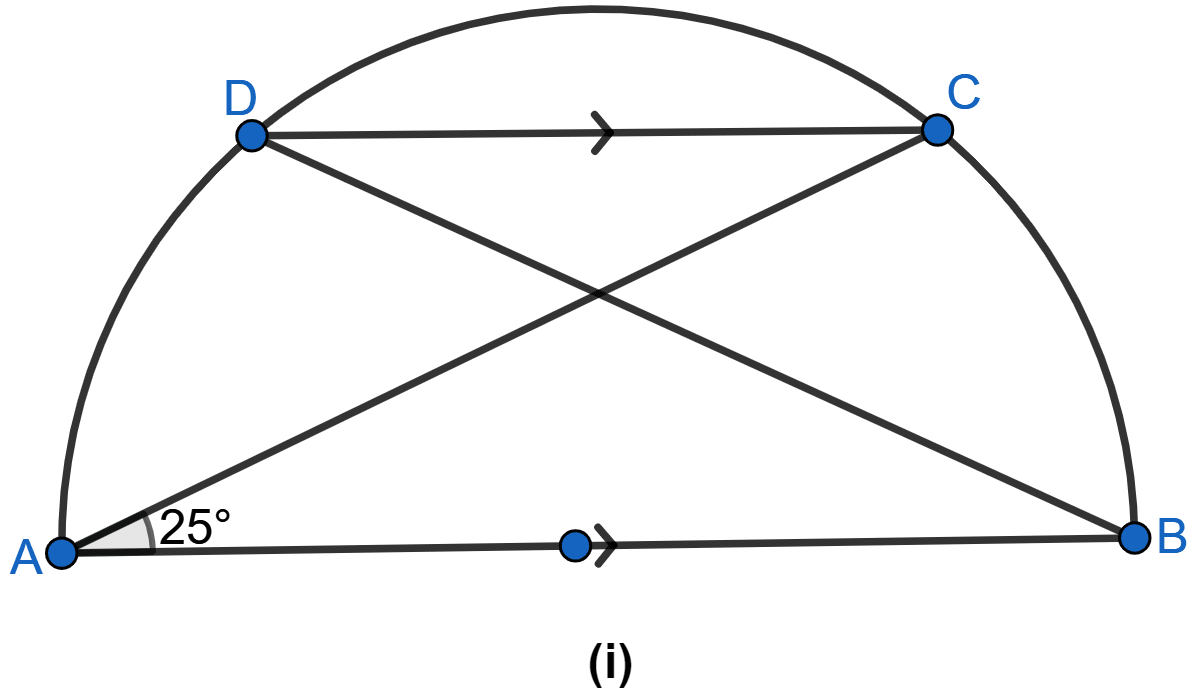Mathematics
In the figure (i) given below, O is the centre of the circle. Prove that ∠AOC = 2(∠ACB + ∠BAC).
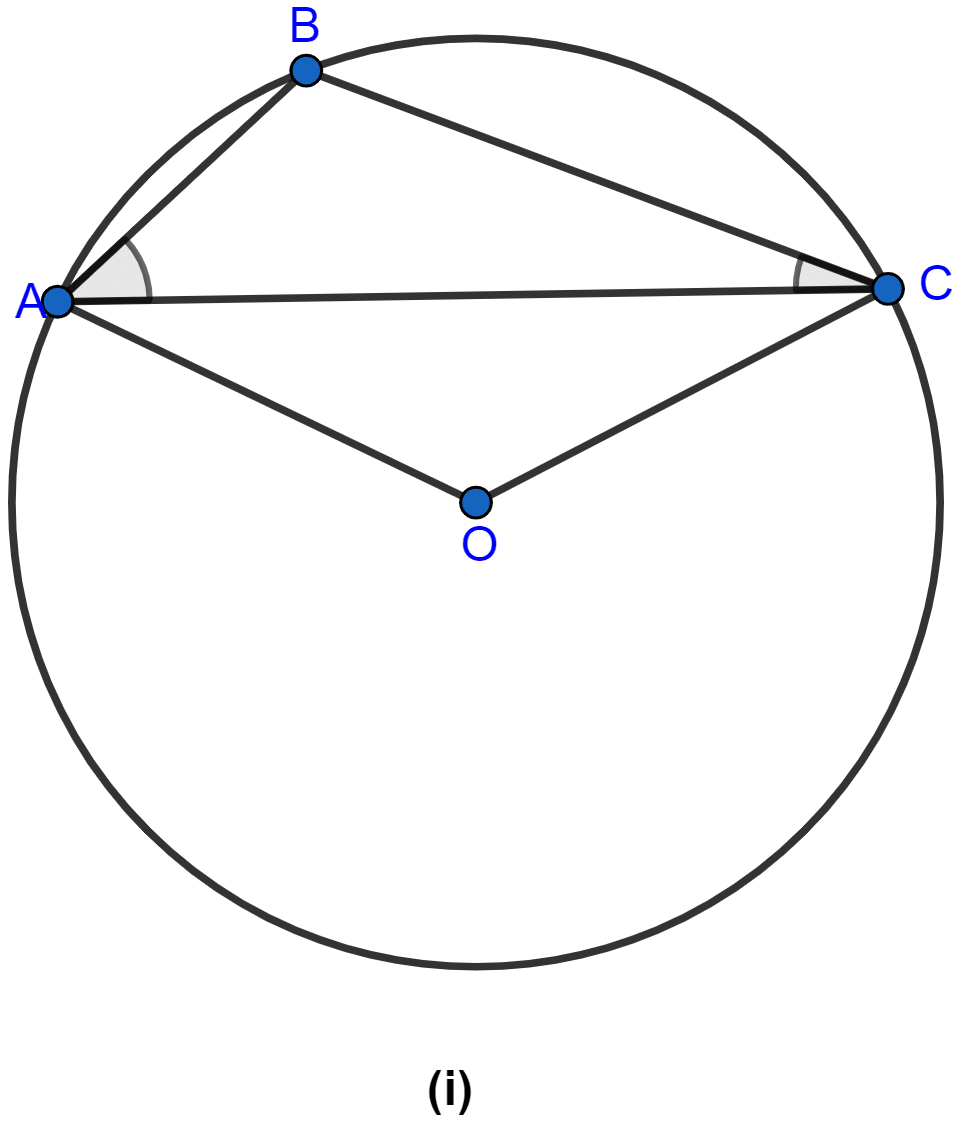
Circles
16 Likes
Answer
We know that sum of angles in a triangle = 180°.
In △ABC,
∠ACB + ∠BAC + ∠ABC = 180°
∠ABC = 180° - (∠ACB + ∠BAC) …..(i)
In the circle arc AC subtends Reflex ∠AOC at centre and ∠ABC at remaining part of the circle.
∴ Reflex ∠AOC = 2∠ABC (∵ angle subtended on centre is double the angle subtended at remaining part of the circle.)
From (i)
Reflex ∠AOC = 2(180° - (∠ACB + ∠BAC))
We know
Reflex ∠AOC = 360° - ∠AOC.
or,
360° - ∠AOC = 2(180° - (∠ACB + ∠BAC))
360° -∠AOC = 360° - 2(∠ACB + ∠BAC)
∠AOC = 360° - (360° - 2(∠ACB + ∠BAC))
∠AOC = 2(∠ACB + ∠BAC).
Hence, proved that ∠AOC = 2(∠ACB + ∠BAC).
Answered By
11 Likes
Related Questions
In the figure (i) given below, AC is a tangent to the circle with centre O. If ∠ADB = 55°, find x and y. Give reasons for your answers.
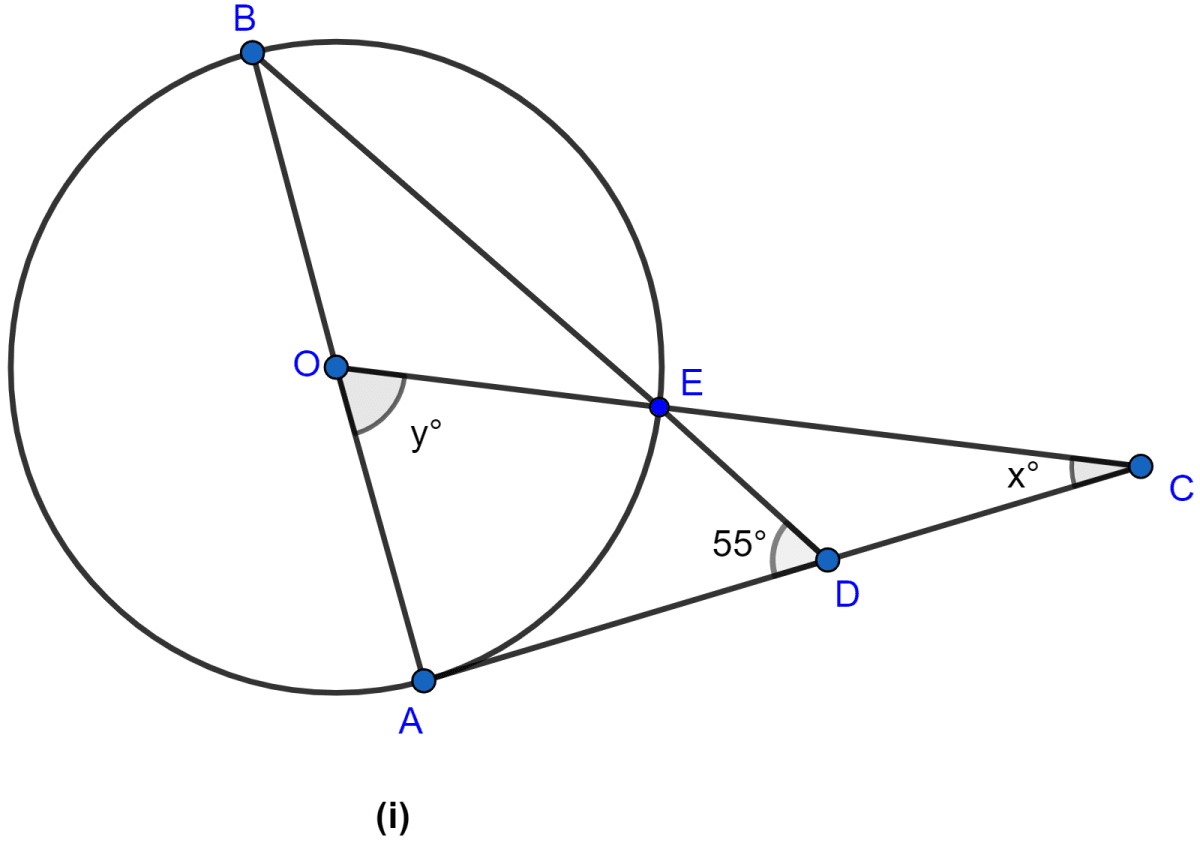
In the figure (ii) given below, AB is a diameter of the semicircle ABCDE with centre O. If AE = ED and ∠BCD = 140°, find ∠AED and ∠EBD. Also prove that OE is parallel to BD.
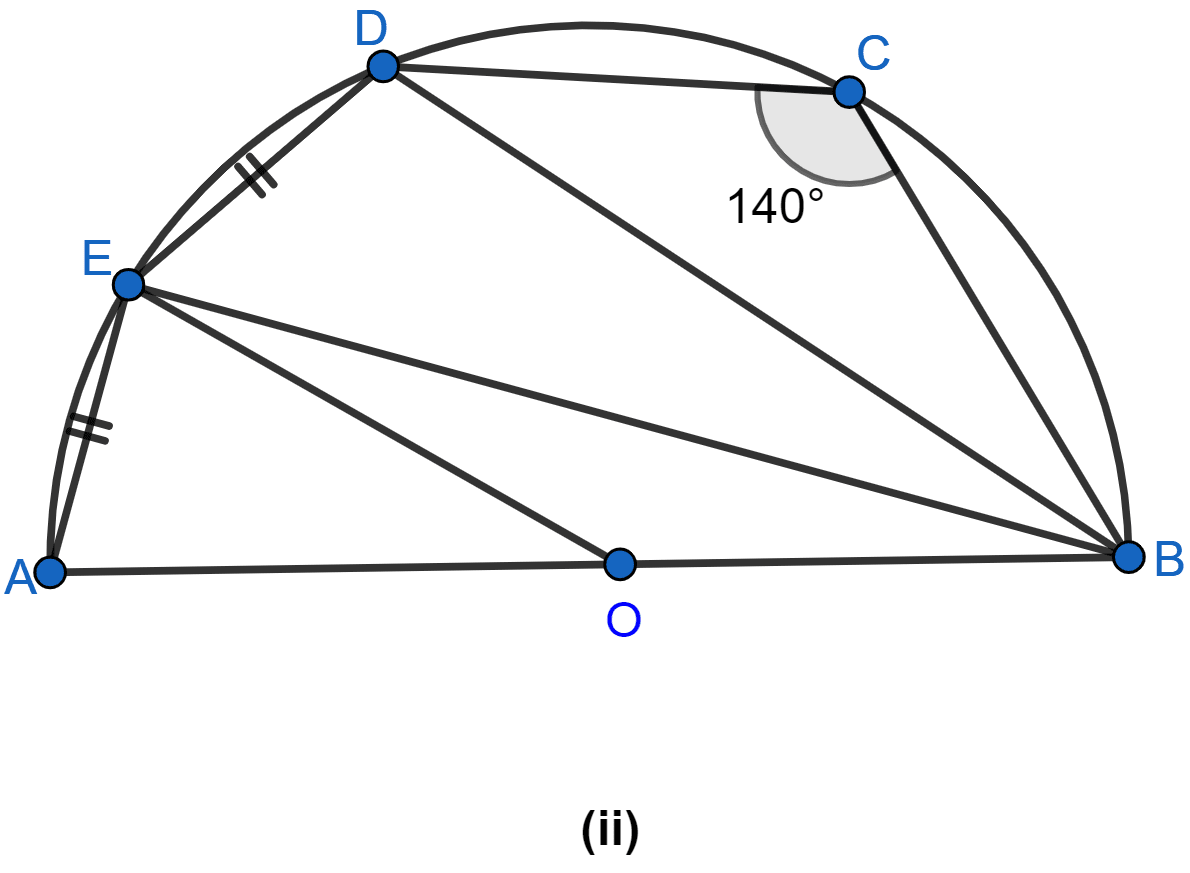
In the figure (ii) given below, O is the centre of the circle. Prove that x + y = z.
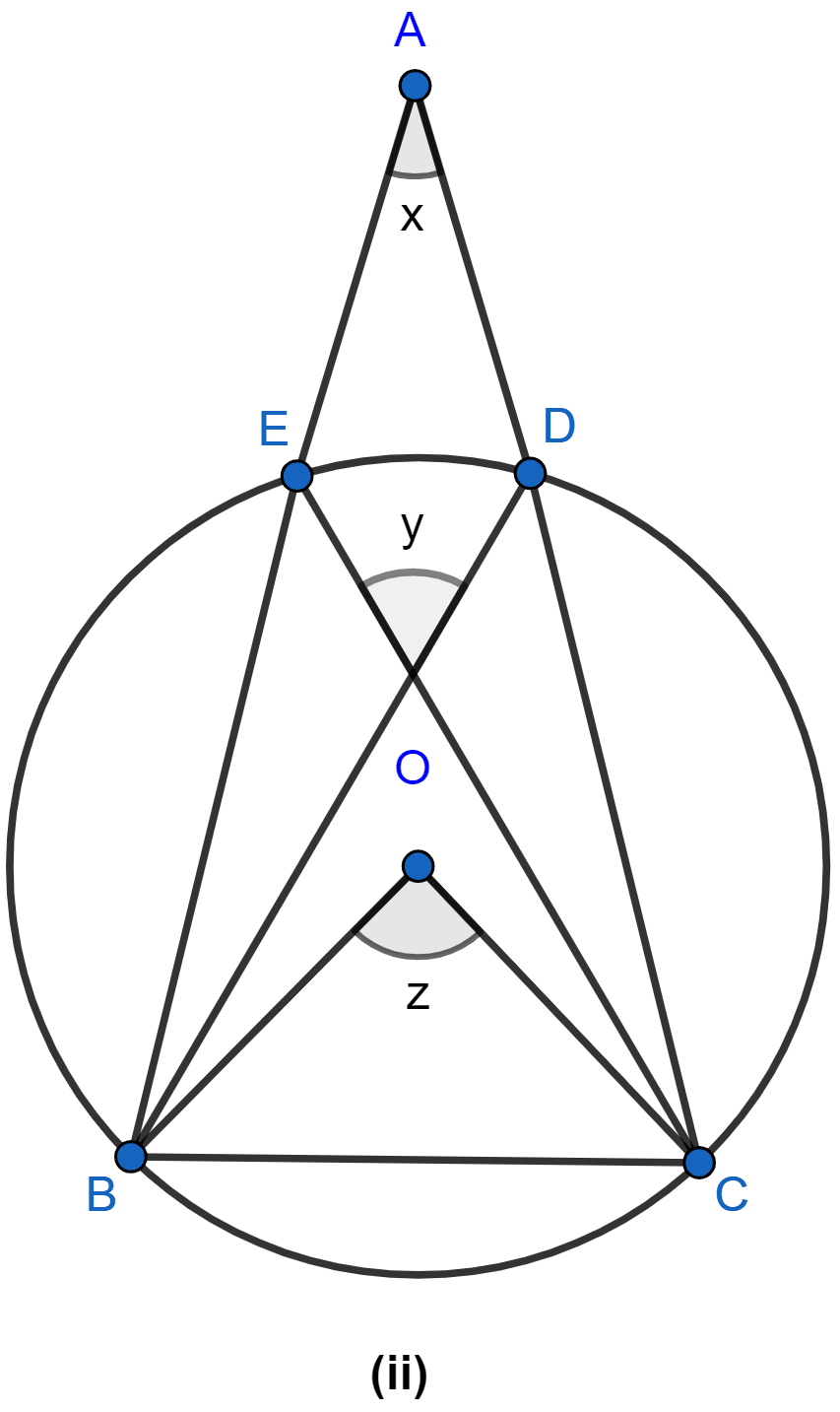
In the figure (i) given below, AB is diameter of a circle. If DC is parallel to AB and ∠CAB = 25°, find (i) ∠ADC (ii) ∠DAC.
